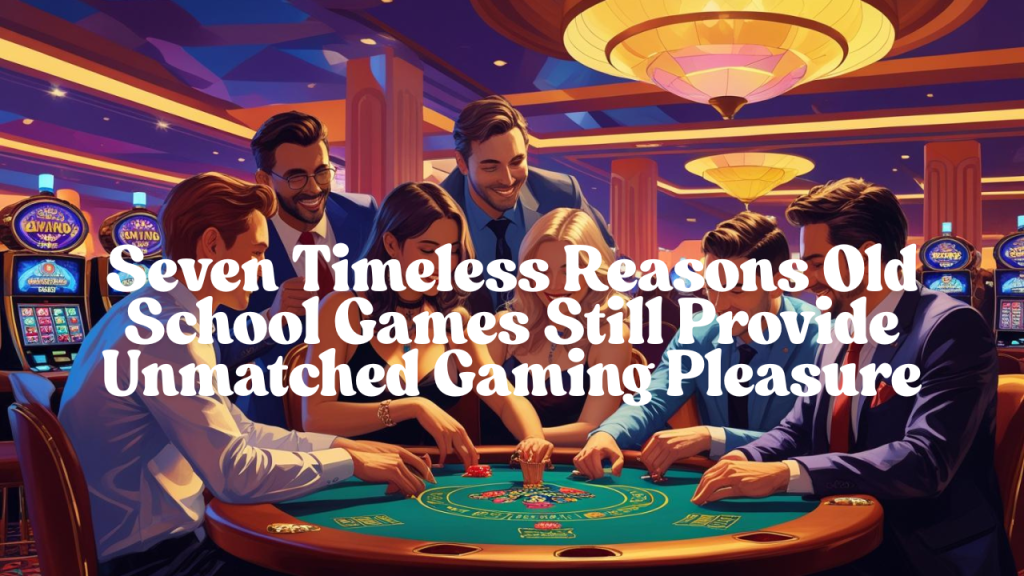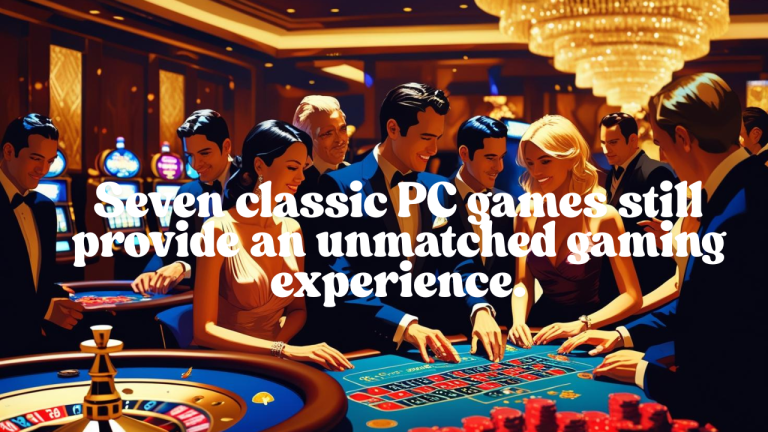One would expect old school games to have quietly disappeared in a world of hyper-realistic visuals, cloud gaming, and vast open-world areas. Against that view, however, vintage gaming has not just stayed relevant—it’s really booming. The period of pixelated heroes, 8-bit tunes, and side-scrolling adventures remains a source of inspiration and pure entertainment value for developers as well as gamers.

This blog will delve deeply into the enduring allure of old school games and investigate why they remain indispensable in gaming culture of today. We will dissect the fundamental qualities that still appeal to generations of gamers from gaming depth to cultural impact. Whether you’re going back to your origins or finding these jewels for the first time, here is your methodical, perceptive guide on why old school gaming still counts.
The Legacy of Old School Games: More Than Just Remarkancy
Old school games usually relate to games published between late 1970s and early 2000s. This covers early arcade successes, NES and SNES period console legends, and PC oldies from the DOS and Windows 95 years. Their appeal stems from excellent design ideas, mechanical simplicity, and ongoing playability—not from only nostalgia.
Here are the reasons they still draw interest:
Without the crutch of dramatic graphics or bloated narratives, these old school game consoles rely on strict controls and well calibrated challenge in refined core mechanics.
Limited hardware capabilities drove developers to be more creative, frequently producing original gameplay experiences still under research today.
Whether on emulators, original hardware, or re-releases, these games are usually easy to pick up and play, appealing to both novices and hardcoreold school games and cards
Seven Old School Games Worth Your Time Still Today let’s review a few powerful books that still tower in the current game scene:
One is Super Mario Bros. (1985).
The flagship side-scroller from Nintendo set the gold standard in level design, timing, and old school gameboy mechanics, hence defining the platformer genre.
2. Pac-Man (1980)
Thanks to its exquisite gaming loop, an arcade icon still relevant today. While new players pick up its goals fast, learning the old school game systemscalls both memorisation and fast reflexes.
3. 1991’s Street Fighter II:
With competitive depth, combo mechanics, and a lineup that became pop cultural icons, this title catapulted fighting games into the mainstream.
4. The 1986 Legend of Zelda
Originally top-down, the first adventure presented free exploration, puzzle-solving, and a sense of wonder unparalleled for its time—and still enthrals in simplicity.
5. Despair (1993)
Doom, the forerunner of the FPS movement, is being hacked and re-released as fans create competitive scenarios, co-op experiences, and fresh levels.
6.. Tetris (1984)
Tetris is among the most ageless puzzle games ever created thanks to pure gameplay logic, precisely tuned difficulty curves, and visual simplicity.
7. Prince of Persia (1989)
Prince of Persia was a technical wonder for its day and now provides a pleasing platforming experience, praised for its fluid animation and exact controls.
Why Old School Games Still Matter: An Expert Interpretive Study
Beyond mere nostalgia, there are structural reasons certain games have stayed relevant in a changing market.
1. Foundational Design Concepts

Old school games stress basic gameplay loops—jump, shoot, dodge, puzzle—that, in spirit, remain unaltered across contemporary franchises. Many times, developers now draw on these origins to create fresh experiences.
2. Over Bloat Replayability
Sometimes modern games struggle with feature overload. Old school titles, on the other hand, were meant to be replayed—not padded. Games like Contra and Mega Man test players to grow and try again, therefore promoting skill growth and involvement.
3. Modding and Portability
Many vintage games run well on low-spec PCs, Raspberry Pis, or portable consoles or have open-source versions. Communities make sure they’re always evolving for more modern devices.
4. Cultural Appropriacy
With pixel art and chiptune music acting as creative calls to legacy, retro game aesthetics have returned in independent production. Names like Celeste and Shovel Knight show this impact is both artistic and commercial.

Starting Old School Games: An Actual Handbook
Whether you’re beginning anew or revisiting your childhood, these guidelines will help you get going:
First step: Select your platform.
Legal access to many old school games is made available by popular sites as GOGcom, Steam (Classic Collections), Internet Archive, and console-specific online shopfronts.
Second step: install an emulator—if necessary.
Emulators like RetroArch, Snes9x, or Dolphin are consistent and generally accepted for systems such NES, SNES, or Sega Genesis.
Third step: hunt a trustworthy controller.
Particularly for action or fighting games, a retro-style controller—like 8BitDo or original USB gamepads—helps authenticity and accuracy.
Fourth: Start with iconic titles.
To grasp the design theory behind great works like Super Mario Bros., Castlevania, or Sonic the Hedgehog, start with classics like these.
Step 5: Engage Communities
Rich in recommendations, troubleshooting, and multiplayer possibilities are subreddits, forums, and Discord groups.
Often asked questions (FAQs).
Q1Are old school games only for those with vintage taste?
Not very slightly. Newcomers as well as veterans will find them fun because of their simplicity, accessibility, and universal appeal.
Q2. Are these games legally playable?
Definitely yes. Many are on licensed sites such Xbox Game Pass, Nintendo Switch Online, and GOG. Stay away from pirated ROMs always.
Q3. On contemporary machines do these games work?
Most of them do. Enhanced re-releases or emulators guarantee fit with Windows 10/11, macOS, and even mobile platforms.
Q4. Why do creators still find great demand for these games?
All important abilities in game production today, they impart insightful teachings in scope control, simple design, and user feedback.
Q5. Exist contemporary games influenced by classic school design?
Yes. Built on nostalgic structures yet polished with modern sensibilities, games include Stardew Valley, Undertale, and Dead Cells are
In essence, old school games are still a smart, fulfilling choice.
Old school games help us to remember what really makes a game fun: gameplay, challenge, and inventiveness. Their ongoing appeal is not random; it comes from careful design, real fun, and communities that will not let them vanish.

These classic books are still your best choice if you’re seeking value without the price tag, depth without the complication, style without the bloat. Participating in old school games helps you not just embrace the past. You are entering an experience that has molded—and still shapes—the direction of gaming.






